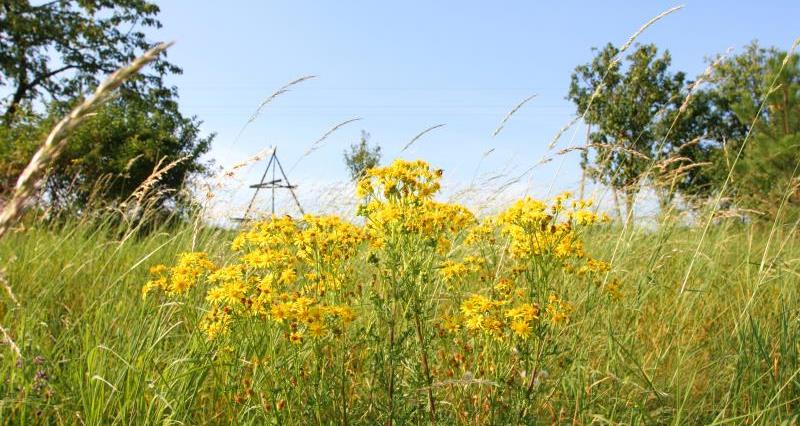Injurious weeds
There are several species of ragwort in the UK; common ragwort is the most widespread and recognised. Although the plant does provide flowers for pollinating insects and food for caterpillars, common ragwort poses a real risk to animal health, with potentially fatal consequences if it is ingested by livestock. It is therefore listed in the Weeds Act 1959.
Five weeds are classified as ‘injurious’ under the Weeds Act 1959 – common ragwort (Senecio jacobaea), spear thistle (Cirsium vulgare), creeping or field thistle (Cirsium arvense), broad-leaved dock (Rumex obtusifolius) and curled dock (Rumex Crispus). It is not an offence to have common ragwort growing on land, however, if it presents a risk to livestock grazing and forage land it must be controlled.
Common ragwort management
Left unmanaged, a common ragwort problem is likely to become worse, as the species is highly vigorous. A single specimen can produce up to 150,000 seeds with a germination rate of up to 70%.
Managing and regularly checking grazing and forage land as well as bordering areas for common ragwort is important. If found it should be pulled, removed, and disposed of responsibly to remove the risk to livestock.
Common ragwort is a toxic plant, and suitable protective precautions must be taken when handling it. Cut and pulled common ragwort plants may still set seed and are toxic if ingested by livestock.
Where unmanaged common ragwort is present on areas bordering livestock grazing and forage land, farmers are advised to identify and resolve this directly with the landowner or manager.
In some cases, this may be on National Highways land. If common ragwort on National Highways land could spread to farmland and put livestock at risk, it can be reported by the landowner or manager to National Highways at: National Highways | Report a maintenance issue on our network.
Natural England complaint
If working with another landowner or manager to resolve a common ragwort issue doesn’t work, typically injurious weeds complaints can be made to Natural England and enforcement notices could be issued requiring landowners to take action to prevent the spread. Natural England should investigate complaints where there is a risk that injurious weeds might spread to neighbouring land. It gives priority to complaints where there is a risk of spread to land used for livestock, land used for forage production and other agricultural activities.
Natural England however is not currently dealing with any new injurious weed complaints. The NFU is worried that this process is not currently available for members, especially as complaints are more likely during the summer months when the plant is easier to spot.
The NFU has raised its concerns with Natural England about the current hold on new complaints and understands that this is a temporary measure while Natural England reviews its approach to addressing injurious weeds.
The NFU is seeking clarity from the government about the review timescales. It is vital that the government continues to have a process to enforce ragwort management where needed.
We will keep members informed of any updates via this webpage.
NFU action
Nationally and locally the NFU works with relevant stakeholders, such as local councils and National Highways, to raise members' concerns and advocate for the management of common ragwort which could present a risk to livestock.
Useful resources:
Below are several resources which may help with the identification and management of common ragwort or any of the other injurious weeds:
- A Defra leaflet helps with the identification of ragwort (and other injurious weeds).
- Defra guidance on how to stop ragwort from spreading including the Code of Practice to prevent the spread of ragwort.
- Guidance on how to make a complaint to Natural England about injurious weeds (currently not dealing with new complaints).
